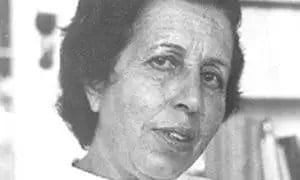Last updated on September 11th, 2021 at 02:57 pm
Tunisia’s apex bank, Central Bank of Tunisia last Thursday, March 26, unveiled new banknotes honouring a female history maker in the country’s medical history.
The bank disclosed that the new 10 Tunisian dinar note would feature female doctor Tewhida ben Sheikh, the first woman to make it onto the country’s currency. Ben Sheikh, born in 1909 passed on a decade ago, in 2010.
She was the first Muslim woman to become a physician in North Africa in the 20th century, and is particularly renowned for her work in women’s health and specialization in gynaecology.
In 1928, she became the first woman to attain a high school baccalaureate and eventually specialized in gynaecology, heading campaigns around access ti contraception and abortion which precipitated the legalization of abortion in 1965.
The new note went into circulation on Friday, March 27, as legal tender. It will circulate alongside the country’s other currency. The country uses coins and banknotes.
The dinar is subdivided into 1,000 milim or millimes. Currently, there are coins of 5, 10, 20, 50 and 500 millimes and 1, 5 and 10 dinars in circulation. With respect to banknotes there are 5, 10, 20 and 50 dinars.
According to the Global Exchange website, the dinar was set out as the new currency in Tunisia in 1958, although it did not start to be used until 1960. Until that moment, the official currency had been the franc and the equivalence to the new currency was of 1,000 francs to 1 dinar.
The Tunisian dinar is commonly abbreviated DT, although the word “dinar” placed after the number is also accepted. Importing and exporting dinars is forbidden in Tunisia. Every year, each Tunisian is allowed to exchange up to 6,000 dinars in foreign currency before leaving the country.

